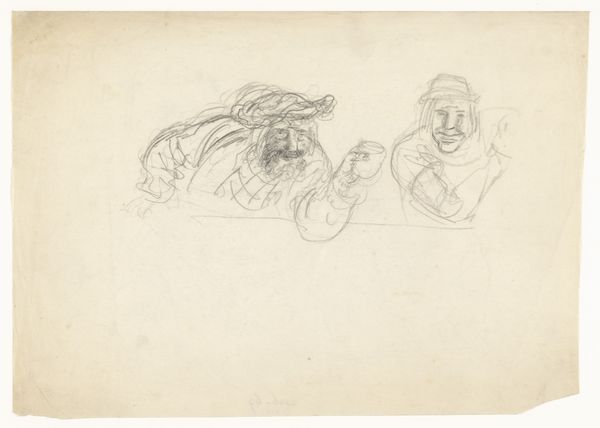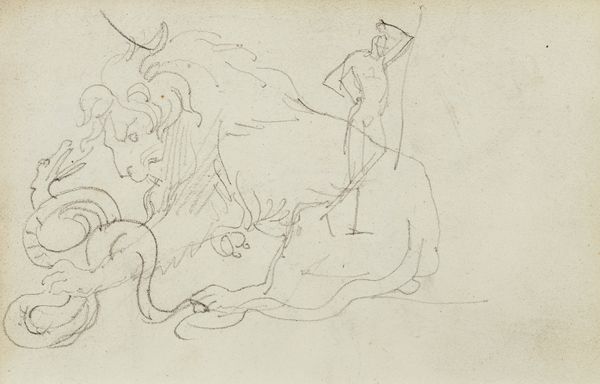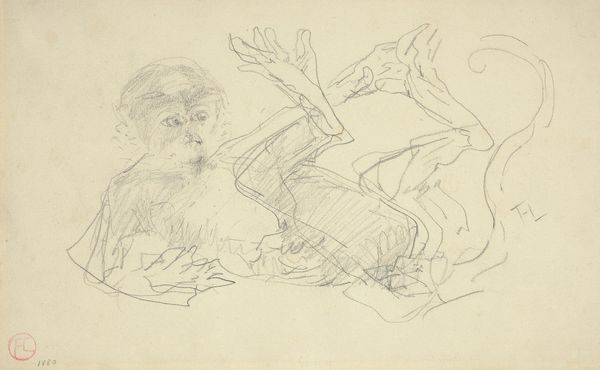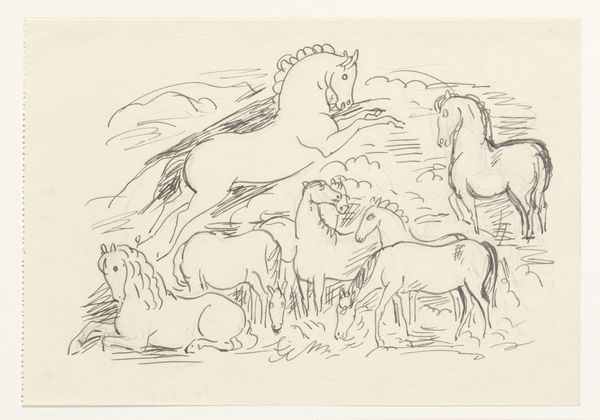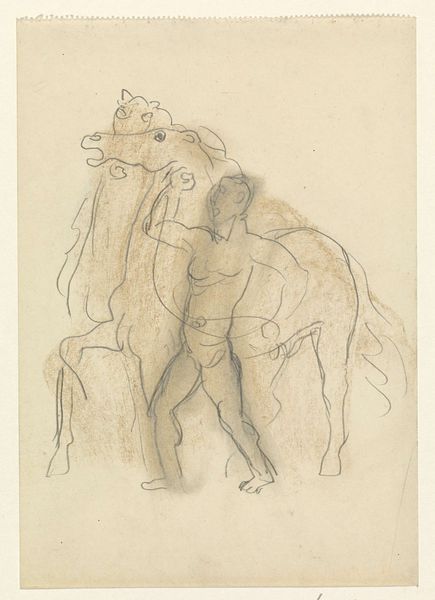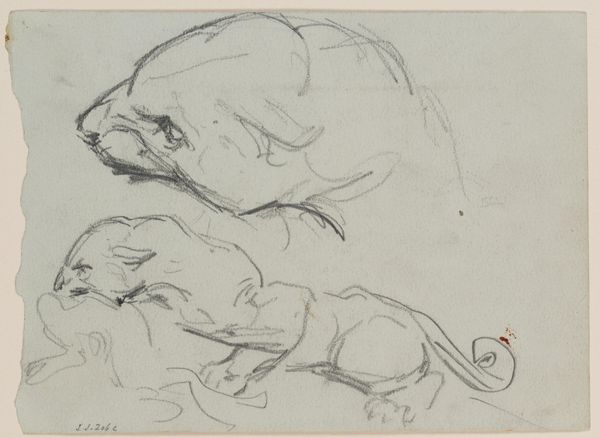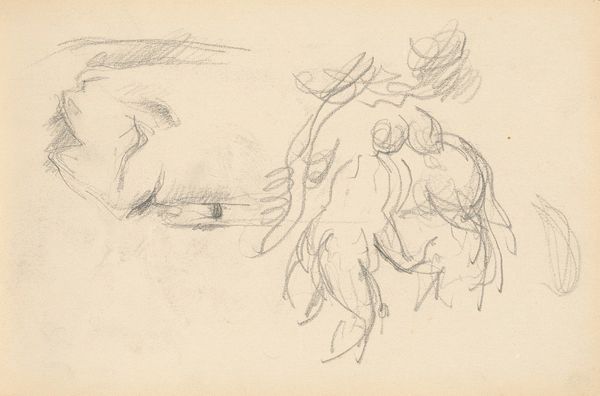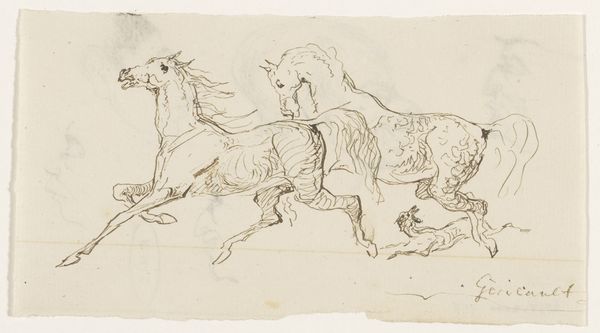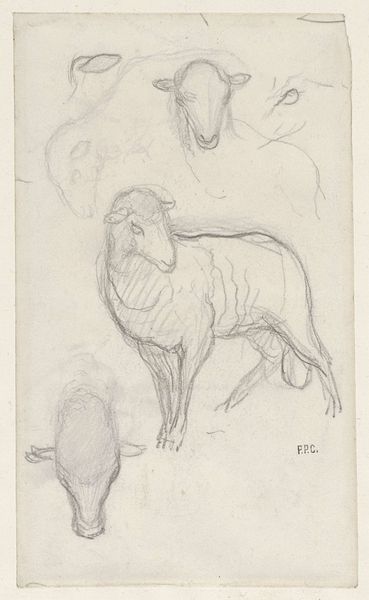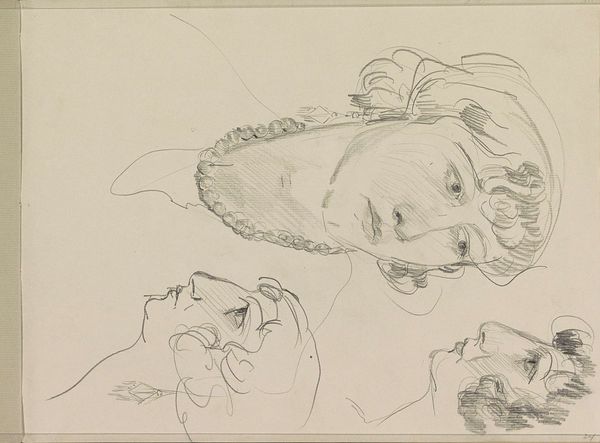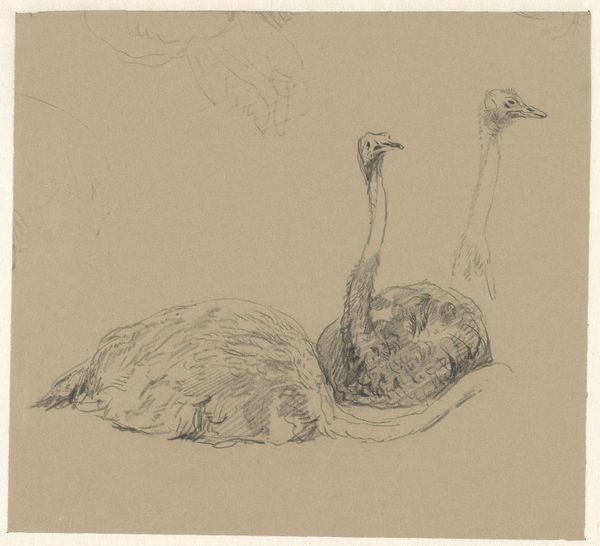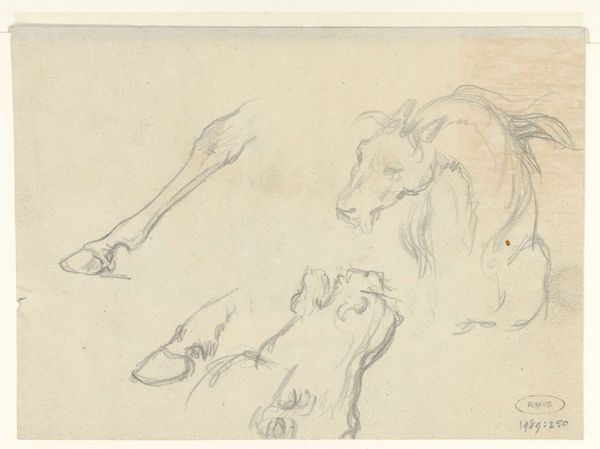
drawing, pencil
#
drawing
#
animal
#
pencil sketch
#
landscape
#
pencil
#
realism
Dimensions: 144 mm (height) x 224 mm (width) (bladmaal)
Curator: Before us is Martinus Rørbye’s "Studies of Dromedaries", a pencil drawing created in 1835 and held at the SMK, the National Gallery of Denmark. Editor: The pencil work creates a hazy image. It reminds me of old expedition documents with preliminary sketches about nature and the world unknown. Curator: That’s a really interesting entry point. Looking at this from the perspective of art history, Rørbye travelled extensively through Europe and to North Africa. His travel writings and sketches challenge narratives about travel. Editor: So you are talking about how Rørbye’s travel narratives shape perception around travel, but I keep returning to the choice of subject. Why dromedaries? What did this animal mean, both to the artist, but also the viewers? Curator: Right, let’s consider what Rørbye might be trying to say about cultural boundaries. As you touched upon, he uses a non-European animal to engage the discussion. Perhaps the work reflects a colonial mindset or attempts to disrupt European supremacy in depicting other regions. The dromedary has cultural significance for people across North Africa and West Asia and the piece seems to demand the audience ask the question of "Who has the authority to interpret cultures that are not their own?" Editor: It's true that dromedaries appear across many cultures. Its shape, form, and capabilities are a bridge between function and symbolism, connoting endurance and adaptation. I believe viewers from any time and place might look at it and reflect upon themes about overcoming challenges, and thriving in uncertain circumstances. The pencil as a medium offers a direct and unpretentious way of creating artwork. This element paired with the sketched look and feel further reinforces the notions of grit, purpose, and resilience. Curator: Thank you. That helps me see this piece of art with a fresh and different perspective. I initially thought of it as an act of potentially problematic documentation, and your interpretation enriches the dialogue, highlighting other meaningful interpretations. Editor: Thank you, likewise. By digging into historical context we discover complex and evolving patterns. By delving into the artwork’s symbols we explore human needs for resilience.
Comments
No comments
Be the first to comment and join the conversation on the ultimate creative platform.

